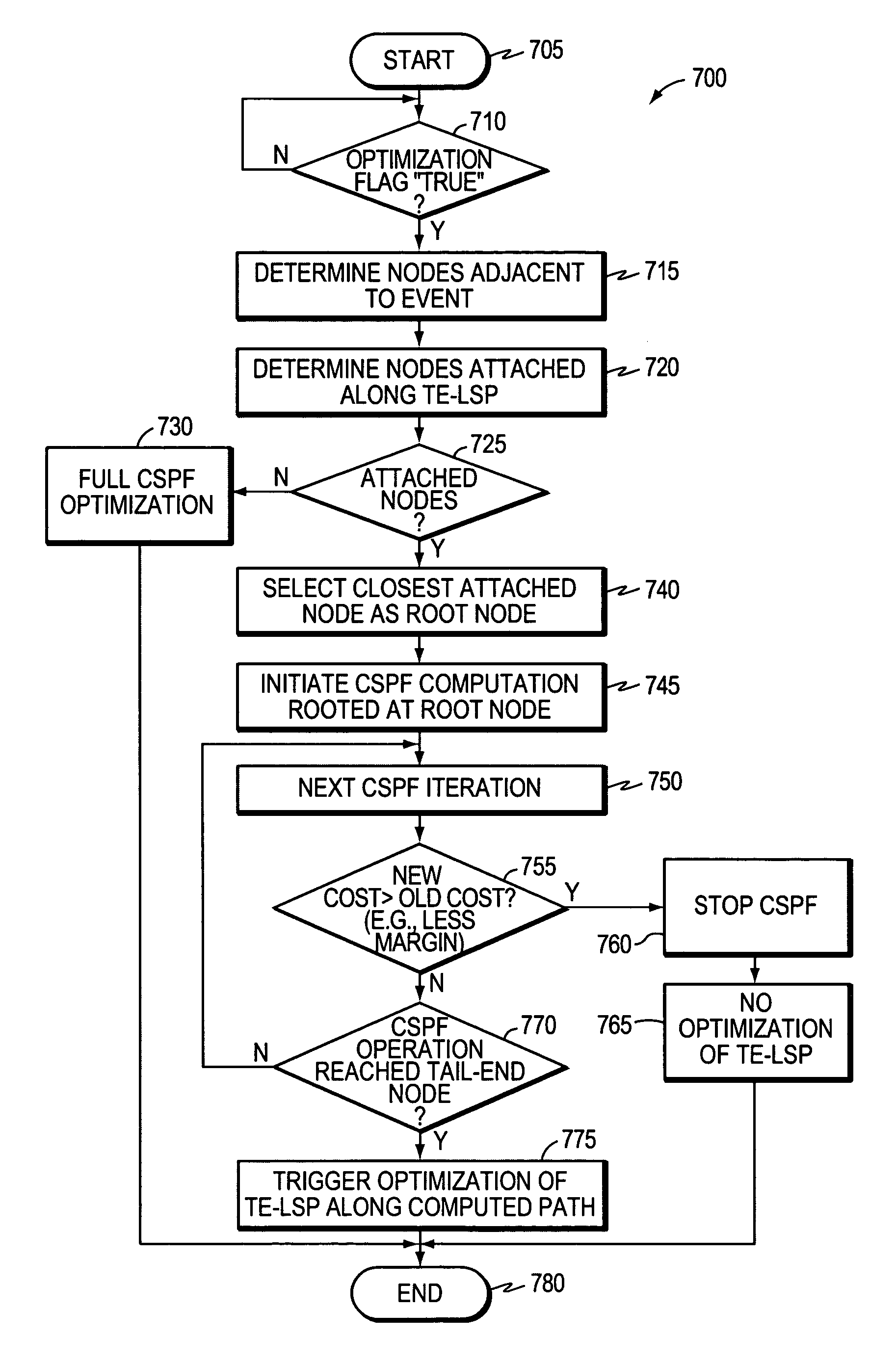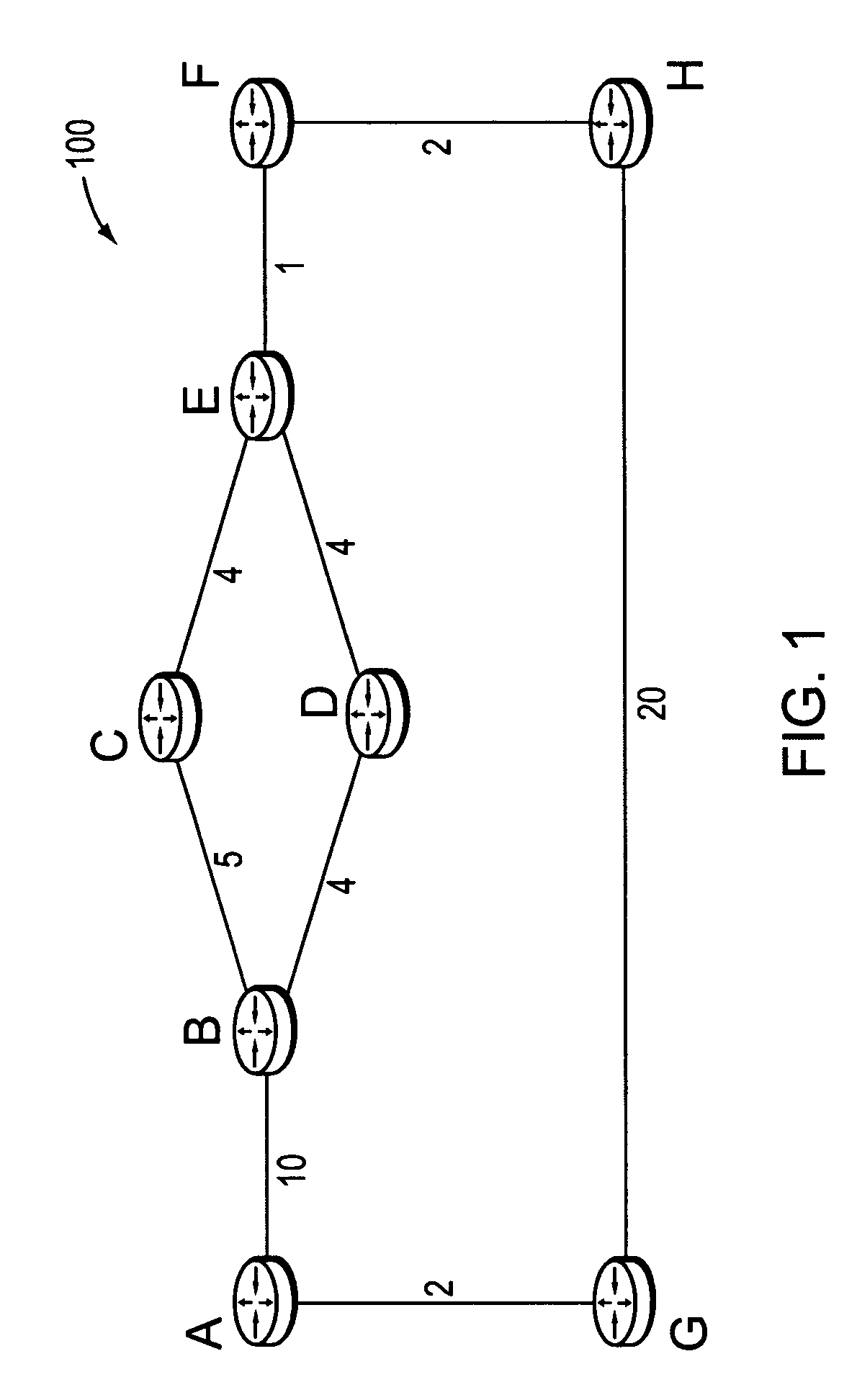Efficient constrained shortest path first optimization technique
a shortest path and optimization technology, applied in the field of computer networks, can solve the problems of reducing affecting the efficiency of te-lsps optimization, and reducing the resource utilization of computing nodes, so as to achieve efficient te-lsps optimization and optimize te-lsps. , the effect of efficiently triggering the optimization of te-lsps
- Summary
- Abstract
- Description
- Claims
- Application Information
AI Technical Summary
Benefits of technology
Problems solved by technology
Method used
Image
Examples
Embodiment Construction
[0036]FIG. 1 is a schematic block diagram of an exemplary computer network 100 comprising routers A-H (e.g., intra-domain routers) interconnected through links as shown. The links between the routers may have an associated metric value (e.g., cost). For example, the cost to reach router B from router A is “10.” The cost values of links between other routers of the network 100 are indicated as the numbers shown beneath each link. Network 100 may be contained within a single autonomous system (AS) or area, or may span multiple areas under certain circumstances as will be understood by those skilled in the art. An AS is herein defined to be a group of intermediate nodes, such as interdomain and / or intradomain routers, within a network that are subject to a common authority and execute one or more inter-domain and / or intradomain routing protocols. Although the network 100 is illustratively shown within a single AS, those skilled in the art will appreciate that the network may alternativ...
PUM
 Login to View More
Login to View More Abstract
Description
Claims
Application Information
 Login to View More
Login to View More - R&D
- Intellectual Property
- Life Sciences
- Materials
- Tech Scout
- Unparalleled Data Quality
- Higher Quality Content
- 60% Fewer Hallucinations
Browse by: Latest US Patents, China's latest patents, Technical Efficacy Thesaurus, Application Domain, Technology Topic, Popular Technical Reports.
© 2025 PatSnap. All rights reserved.Legal|Privacy policy|Modern Slavery Act Transparency Statement|Sitemap|About US| Contact US: help@patsnap.com



